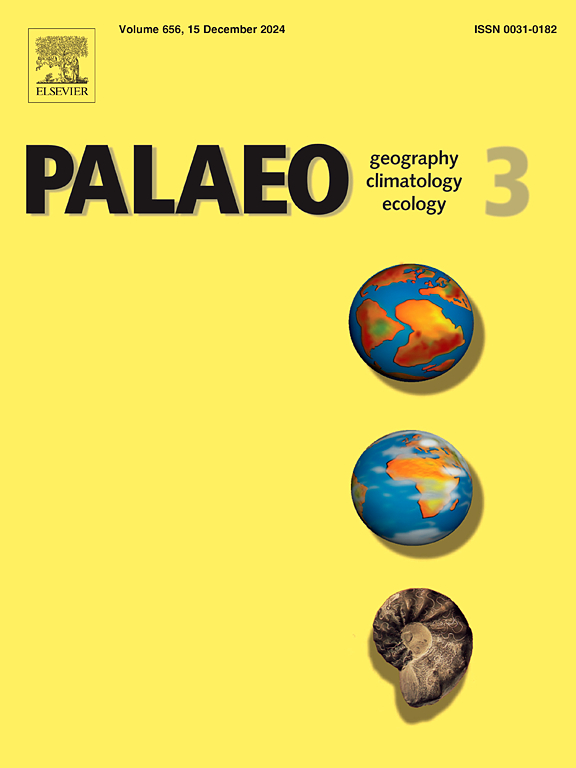Strengthening the evidence for seasonal intertidal exploitation in Mesolithic Europe and new insights into Early Holocene environmental conditions in the Bay of Biscay from the oxygen isotope composition of Phorcus lineatus (da Costa, 1778) shells
IF 2.6
2区 地球科学
Q2 GEOGRAPHY, PHYSICAL
Palaeogeography, Palaeoclimatology, Palaeoecology
Pub Date : 2025-02-01
DOI:10.1016/j.palaeo.2024.112624
引用次数: 0
Abstract
Marine molluscs have been exploited by human societies since prehistoric times. Such practices have often resulted in large accumulations of shell remains in archaeological sites that offer unique information on biological, ecological and cultural aspects of human interaction with coastal systems in the past. In this study, stable oxygen isotope (δ18O) analysis was carried out on archaeological shells of Phorcus lineatus (da Costa, 1778) from the Mesolithic shell midden site of J3 (northern Iberian coast) to determine the seasonality of intertidal collection. The results indicate a consistent pattern of winter exploitation, supporting the emerging view that collections were governed by cost-benefit and management principles that are now widespread documented in other coastal Mesolithic sites in Europe. The consistent seasonal collections of P. lineatus during colder months can be taken as evidence of specie-specific management strategy to optimize yield while preserving local populations for future exploitation. Our results reinforce the view that European hunter-gatherers developed ecological knowledge on specific animal resources that persisted over large geographic areas. Additionally, from a palaeoenvironmental perspective, the sea surface temperatures (SST) inferred from δ18O values derived from mollusc shells (SSTδ18O) indicate that coastal marine waters during the Early Holocene in the southern Bay of Biscay were warmer than those observed today. These environmental conditions are evaluated in relation to changes in insolation and ocean currents over time.
求助全文
约1分钟内获得全文
求助全文
来源期刊
CiteScore
5.90
自引率
10.00%
发文量
398
审稿时长
3.8 months
期刊介绍:
Palaeogeography, Palaeoclimatology, Palaeoecology is an international medium for the publication of high quality and multidisciplinary, original studies and comprehensive reviews in the field of palaeo-environmental geology. The journal aims at bringing together data with global implications from research in the many different disciplines involved in palaeo-environmental investigations.
By cutting across the boundaries of established sciences, it provides an interdisciplinary forum where issues of general interest can be discussed.

 求助内容:
求助内容: 应助结果提醒方式:
应助结果提醒方式:


